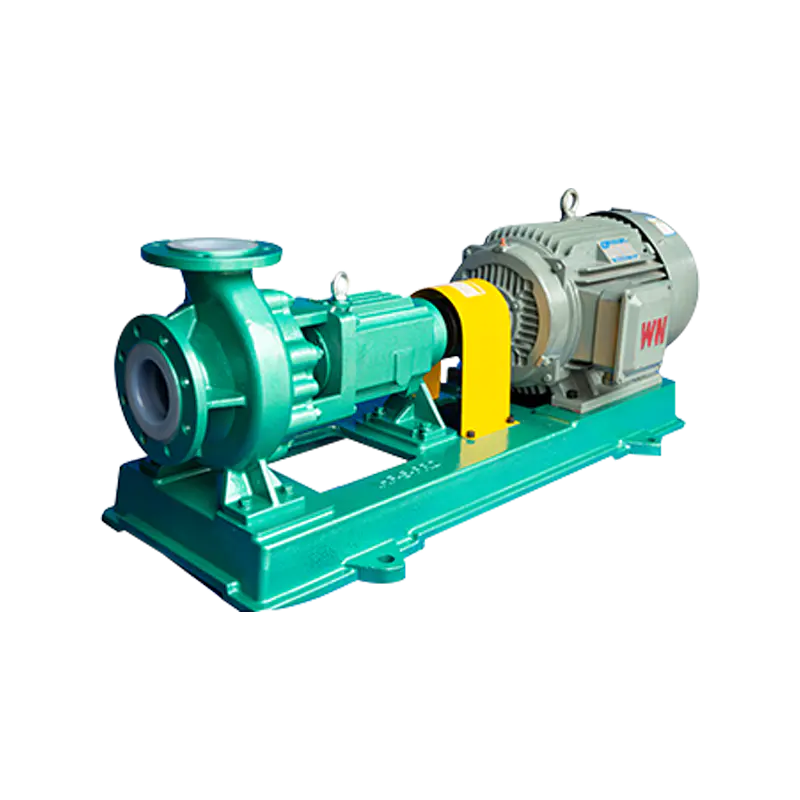Fluorine-lined centrifugal pumps are designed to handle some of the most demanding industrial environments, where highly corrosive substances need to be transported safely and efficiently. With their ability to endure aggressive chemicals and extreme conditions, these pumps are indispensable in industries ranging from chemical manufacturing to pharmaceuticals. However, their unique construction and application requirements necessitate particular care and attention during operation. Understanding these precautions is key to ensuring both the longevity of the pump and the safety of its operation.
Proper Material Handling and Compatibility
Fluorine-lined centrifugal pumps are equipped with a lining that offers unmatched resistance to corrosive materials. However, this lining is sensitive to mechanical damage, especially during installation and operation. It’s imperative to ensure that all parts coming into contact with the pump are free from contaminants that could damage the fluorine lining. Always verify material compatibility before introducing any fluid into the system. Incompatible chemicals can degrade the lining, leading to system failures and potential leaks.

Avoid Overloading the Pump
Operating a fluorine-lined centrifugal pump beyond its recommended capacity can result in severe consequences. Overloading the pump not only risks damaging the internal lining but can also lead to overheating, increased wear, and diminished efficiency. Always ensure that the pump is working within its designated flow rate and pressure limits. Regularly monitoring system parameters will help identify any potential issues before they escalate.
Maintain a Consistent Flow Rate
Fluctuations in the flow rate can cause significant damage to the pump’s components. Excessive pulsations or surges in pressure can compromise the integrity of the fluorine lining, especially at the joints. Maintaining a steady flow rate ensures that the pump operates within optimal parameters and prevents unnecessary strain on both the motor and the lining. A steady flow not only promotes efficiency but also prolongs the lifespan of critical components.
Ensure Proper Lubrication
Fluorine-lined centrifugal pumps often operate in demanding environments where friction can lead to rapid wear. The bearings, seals, and other moving parts must be lubricated according to manufacturer guidelines. Failure to properly lubricate these components can result in overheating, premature failure, and potential pump shutdowns. Always use the recommended lubricants to avoid compromising the pump’s performance.
Regular Inspection and Maintenance
Like all precision equipment, fluorine-lined centrifugal pumps require routine inspection and maintenance to ensure they continue operating at peak performance. Regularly check for signs of wear and tear, especially on the lining, seals, and connections. Any minor damage, if left unchecked, can lead to more significant issues, such as chemical leakage or pump failure. Schedule routine maintenance checks and promptly address any issues detected during operation.
Temperature Considerations
Fluorine-lined pumps are generally designed to withstand high temperatures, but this does not mean they are impervious to extreme heat. Overheating can cause the lining to soften, warp, or degrade, leading to a loss of chemical resistance. Always monitor the temperature of the fluid being pumped and ensure that it remains within the recommended operating range. In some cases, additional cooling measures may be required to maintain the pump’s stability during operation.
Proper Venting and Sealing
Fluorine-lined centrifugal pumps are sealed systems, and maintaining these seals is crucial for preventing leaks and ensuring the safety of both the pump and the surrounding environment. Ensure that all sealing elements are intact and properly fitted before starting the pump. Any breaches in the seal can lead to leaks, particularly when pumping volatile chemicals, creating a serious safety hazard.
Installation Precautions
The installation process is one of the most critical stages in the operation of a fluorine-lined centrifugal pump. Improper installation can cause alignment issues, leading to misalignment of the pump shaft or even damage to the lining. Ensure that the pump is installed correctly, with particular attention to alignment and securing of all components. The mounting surface should be stable, and all piping should be free of strain to prevent undue stress on the system.
Pressure and Suction Conditions
Always ensure that the pump’s suction and discharge pressures remain within the specifications provided by the manufacturer. Too high a suction pressure can result in cavitation, which can damage the pump’s impeller and lining. Conversely, excessive discharge pressure can put undue strain on the system, potentially causing mechanical failure. Maintaining balanced pressure levels throughout the system is essential for optimal performance and longevity.
Fluorine-lined centrifugal pumps are high-performance systems designed for specialized applications where precision and reliability are paramount. However, their complex design and demanding operational conditions require that operators adhere to a strict set of precautions. By following these guidelines—ranging from ensuring material compatibility to maintaining proper lubrication and monitoring system conditions—users can extend the lifespan of their pumps, reduce the likelihood of costly failures, and safeguard both personnel and equipment.





















